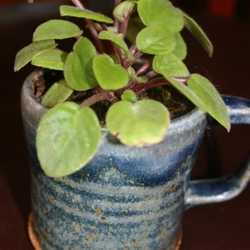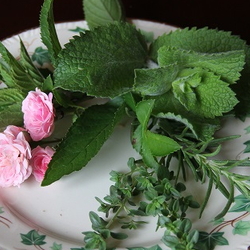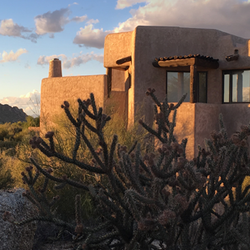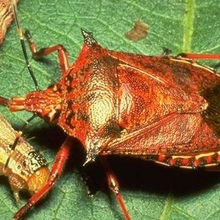As gardeners, we often think the best solution is to have a friend, neighbor, or family member come to the house and water. There are some drawbacks to this idea and you must weigh them carefully before entrusting this chore to someone else.
- Try to use someone who also gardens, and realizes the importance of watering.
- Take your chosen watering person on a tour of the project to make sure they understand how much is involved and what the schedule should be. Do this at least one week before you leave. If they seem hesitant or shocked at what's involved, find someone else.
- Be sure to demonstrate how to tell if the soil is dried out. Overwatering can be just as disastrous as no watering.
- If indoor plants are involved, be sure it is someone you know and trust with a house key.
- About a week before you leave, do a dry run of your watering needs, then write down which plant needs how much, and how often. Mark each pot to correspond with the information.
SELF-WATERING IDEAS
Unless you will be away for 3 weeks or more, most of the following ideas will work just fine and you wont need to worry about someone forgetting to water your plants.
Outdoors: Trips up to 7 days
Simple and Free
- The simplest method for outdoor pots and hanging baskets is to move all of them into your dark, cool garage. (Do this BEFORE watering them; theyll be lighter and easier to move.) The temperature will remain constant and evaporation will slow. Always use drip pans under the containers to retain water. If you will be away longer, then ask a trusted individual to come in and give any dry pots a drink.
- Move all your containers to a shady, protected area. Place drip pans under each and water well. Group together those that need less water and place in the most protected spot; then group the thirsty ones together and place them close to the others. Unless a heat wave comes while youre gone, they should all be fine. If you will be away longer, then ask a trusted individual to come in and give any dry pots a drink.
- Take down hanging baskets and place in a drip pan in a protected area, out of the direct sun and wind. Water well just before you leave. If you will be away longer, then ask a trusted individual to come in and give any dry pots a drink.
- Double potting smaller containers also helps insulate the soil during the hottest weather. Place the container inside a larger one, then fill the space with soil or fine mulch. (This is beneficial whether you're away or at home.)
- Remember that dark containers absorb more heat than the lighter colored ones. Consider this early in the year when planning your patio pots.When planning your outdoor containers, take your vacation plans into consideration and try to use plant materials that require less water; they will fare better while youre away.
- Adding a layer of mulch to the surface of each pot helps cut down on evaporation.
Make your own self-waterer:
For large containers
- Cut the bottom out of a 2-liter plastic beverage container.
- Remove lid and cover the opening with a small piece of gauze, secured with a rubber band around the neck of the bottle. (This keeps the soil from forming a plug in the opening.)
- Push neck of bottle into the soil; do this near the edge so the bottle can rest against the pot.
- Fill the bottle with water the day before you leave; then on the day you leave, top up with water again.
For small containers (such as houseplants)
- Use small plastic beverage or cough syrup bottles.
- Remove the bottom.
- Remove lid and cover the opening with a small piece of gauze, secured with a rubber band around the neck of the bottle. (This keeps the soil from forming a plug in the opening.)
- Push neck of bottle into the soil; do this near the edge so the bottle can rest against the pot.
- Fill the bottle with water the day before you leave; then on the day you leave, top up with water again.
COMMERCIAL WATERING SYSTEMS
The range of watering aids is diverse and priced from moderate to expensive. Your own landscape and the value you place on its well-being will determine what you choose.
Soakers & Drip Hoses
Simple soakers are inexpensive and work very well for landscape beds; they can also be used to aid in watering containers while you are away.
- Move all your containers to the selected flower bed, then run the soaker hose across the tops of the pots.
- You can either leave the faucet on for just a tiny drip, or you can purchase a timer which will better conserve water. BE SURE TO PLACE A NOTICE ON THE FAUCET SO SOMEONE DOESN'T TURN IT OFF WHILE YOU'RE AWAY!
- In this instance, do NOT place drip pans under the pots; the plants will drown.
- The soaker will water both your containers and the garden around them.
Drip hose systems are a little more expensive, but they specifically target the plants and containers where you place them. Again, a timer will be needed for this type of system.
Water Delivery Devices

Many products are available, with water delivery over a period of 3 to 5 days, up to 2 weeks.
Self-watering probes (see photo A) are suitable for short vacations. A ceramic cone is inserted into the soil, and an attached watering tube is immersed into a container of water. The manufacturer states that the probes emit 1/4 to 1 liter of water per week, depending on the needs of the plant. (Information on website.)
Plantastic!® water delivery spikes (see photo B) deliver about 1.5 ounces of water per day. This is a commercial version of the beverage bottle, but with a long spike that sinks deep into the soil to deliver water directly to the roots. Manufacturer states that the bottle will last from 10 to 20 days, depending on the needs of the plant. (Information on website.)
Gels, or time-release water products
Several products are available which utilize all-natural, biodegradable ingredients to keep soil moist. The gel-form water gradually releases the moisture when it comes into contact with the soil.
DirectRoot GelSpike (see photo C) is bottled time-release water in a direct delivery form.  Insert the spike into the soil and the gel is slowly released. Manufacturer states that the 3-inch spike lasts for 1 to 2 weeks, and is safe for use around children and pets. Larger sizes are also available which last 2 to 3 weeks and 3 to 4 weeks. (Information on website.)
Insert the spike into the soil and the gel is slowly released. Manufacturer states that the 3-inch spike lasts for 1 to 2 weeks, and is safe for use around children and pets. Larger sizes are also available which last 2 to 3 weeks and 3 to 4 weeks. (Information on website.)
Bottled crystals use the same principle, but must be mixed into the soil at the time of planting. They are great for indoor plants, but should be used with caution in outdoor planters. With over-watering or a heavy rainfall, the crystals expand 4 to 6 times their size and can push plants completely out of the container.
Indoors
Simple and Free
For short periods (3 to 5 days), simply move all houseplants out of direct sunlight or close the blinds/drapes. If this isn't possible, move the plants to a shady, cool part of your home (especially if you turn the air conditioner down or off). Place drip pans underneath the pots and water well just before you leave.
- For longer periods of up to 2 weeks, use your bathtub as a watering hole. Don't use this method for plants that rot easily; e.g., African violets, succulents, etc.
- First, water each plant thoroughly.
- Run a little water into the tub, about 1 inch. Don't use too much or the plants will drown.
- Spread a thick bath towel on the bottom.
- Place the pots in the tub. If you have a shower curtain, close it to retain humidity in the space.
- Use the small homemade self-watering bottles mentioned earlier in this article.
- Make a greenhouse tent over each plant by covering it loosely with clear plastic bags. Be sure plants are not in direct light when using this method; they will cook!
Commercial Watering Products
Any of the gels or plastic spike water delivery systems will work well for houseplants. Be sure to follow the directions.
Now that you have that chore taken care of, have a fabulous vacation!
Photos:
Article lead: Toni Leland
Self-Watering Probes, used with permission of Gardener's Best
Plantastic! used with permission of Plantastic!
GelSpike used with permission of DirectRoot

















